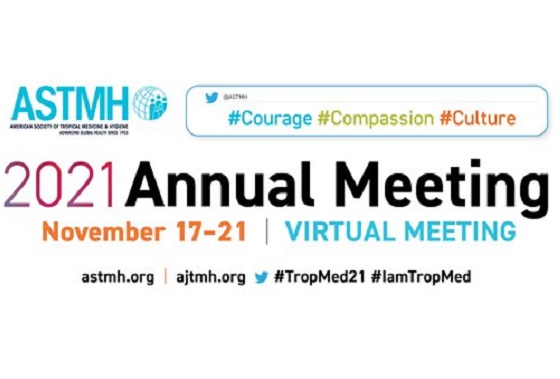November 29, 2021
Researchers present findings related to diarrhea and bacterial illness treatments at ASTMH 2021
 This year, the 2021 American Society of Tropical Medicine & Hygiene conference was held virtually from November 17th-21st. The annual meeting is the premier international forum for the exchange of scientific advances in tropical medicine, hygiene, and global health. Researchers from Global WACh’s Gut Health and Child Survival scientific priority group presented on data from studies focusing on diarrhea and bacterial illness treatments.
This year, the 2021 American Society of Tropical Medicine & Hygiene conference was held virtually from November 17th-21st. The annual meeting is the premier international forum for the exchange of scientific advances in tropical medicine, hygiene, and global health. Researchers from Global WACh’s Gut Health and Child Survival scientific priority group presented on data from studies focusing on diarrhea and bacterial illness treatments.
Research Coordinator Hannah Atlas presented the poster abstract, “Clinical characteristics and health seeking behaviors among high-risk children 2-23 months with acute diarrhea presenting to facilities in Western Kenya”
Authors: Hannah E. Atlas1, Emily L. Deichsel2, Churchil O. Nyabinda3, Christine J. McGrath1, Judd L. Walson1, Patricia B. Pavlinac1, Benson O. Singa3 1University of Washington, Seattle, WA, United States, 2University of Maryland, Baltimore, Baltimore, MD, United States, 3Centre for Clinical Research, Kenya Medical Research Institute, Nairobi, Kenya
Abstract: Diarrhea remains a leading cause of mortality among children under 5 in low- and middle-income countries. Utilizing screening data from the Kenya site of a recently completed multi-country randomized control trial (AntiBiotics for Children with severe Diarrhoea [ABCD] Trial), we sought to determine sociodemographic and clinical characteristics associated with care-seeking for diarrhea. We compared characteristics of 4881 children with acute diarrhea who either self-referred to a health facility (n=2437) to those who presented following referral by a community health worker (CHW) (n=2444) using Chi-square tests. Significantly more children presented directly to facilities with a danger sign (37.5%) as compared to those referred by CHWs (32.4%, p=<0.001). In addition, more children who self-referred presented with dehydration (36.5%) and 5 or more loose stools in the last 24 hours (52.8%) as compared to children referred by CHWs (28.4% and 42.3%, respectively, p=<0.001). However, there was a higher proportion of children with visible blood in stool among the group of children referred to facilities by CHWs (11.3% vs 7.6%, p=<0.001). Stunting prevalence [length-for-age z-score <-2] between these two populations did not differ significantly (13.5% among children referred by CHWs vs 13.8% stunted among self-referrals, p=0.74). Caregiver education and household crowding was associated with the route of care seeking, with both a higher proportion of household crowding (17.6% vs 15.0%, p=<0.001) and lower caregiver education (primary school or less) (39.6% vs 30.3%, p=<0.001) among children referred by a community health worker relative to self-referred children. Results of this analysis highlight the importance of community-based referral systems in connecting children to care, and the need to continue strengthening these systems to encourage early care seeking among children who may not be in contact with CHWs.
On the last day of the conference, two Global WACh faculty members gave oral presentations. Dr. Donna Denno (Associate Director, Pediatrics and Global Health) organized the symposium, “Undernutrition in Children: The Role of Enteric Dysfunction,” that highlighted environmental enteric dysfunction (EED), a disorder characterized by gut inflammation, intestinal permeability, and poor nutrient absorption, particularly among children in resource limited settings. Dr. Denno and researchers from the EED Biopsy Initiative (EEDBI) Consortium presented findings from three study sites that conducted endoscopic intestinal biopsies from children suffering from growth faltering and not responding to nutritional interventions despite thorough medical evaluation.
Dr. Patricia Pavlinac (Assistant Professor, Global Health) presented “Etiology-specific effects of azithromycin on acute watery diarrhea in children under 2 years in low- and middle-income settings” that featured findings from the ABCD Trial.